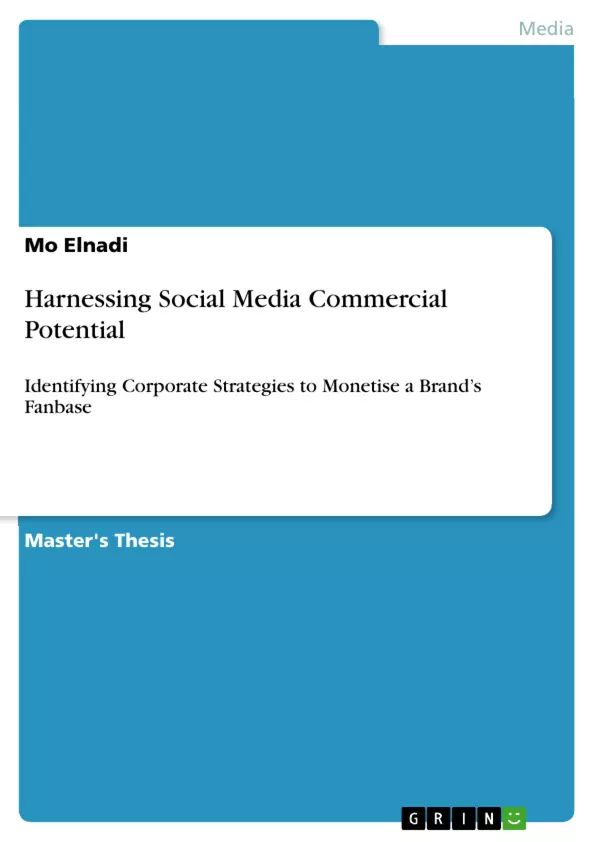There is a need for academic research that determines the factors that influence purchasing decisions or trigger word-of-mouth (WOM) endorsements amongst consumers on social media (SM) channels; with the aim of identifying critical components of an effective digital communication strategy. This research focuses on exploring these factors through studying consumer engagement motives behind connecting with brands via SM during purchasing decision lifecycle phases.
The researcher was able to discover misalignments between engagement motives of consumers and the current corporate approach in exploiting SM opportunities. The quantitative empirical research captures the opinions of 335 UK respondents. This acts as the primary data to accompany the full literature review of journals, academic studies, and web resources acting as secondary research material. The main findings reveal that a corporate needs to treat SM platforms as two-way communication channels.
Trust and relationships are built over time between a corporate and the target audience through valuable content and identifying the behaviour of top influencers on the right channels. Factors like gender, age group, level of experience, use of wireless devices and different personality types all directly affect consumer-to-consumer and consumer-to-brand engagement on SM channels. To fully exploit the commercial aspects of SM, effective SM engagement strategy is needed to build conversations and fulfils the ranges of needs of different consumers. Research shows consumers are interested in sharing tips relating to their stage in the cycle. Furthermore, consumers indicated that marketing messages can be perceived as an interruption to the natural consumer-to-consumer communication flow.
The research also distinguishes between propensities to engage with a brand, and purchasing or WOM advocacy that might not be directly related. Consequently, many engagement barriers are created as a result of this misalignment between corporate assumptions and actual consumer engagement motivations that unnecessarily lead to loss of opportunities. If identified and studied carefully, corporates could adapt their digital communication strategies to fully harness SM potential, and thereby monetise a brand fanbase. The researcher has developed a number of strategic frameworks that could help marketers understand the dynamics of this complex ecosystem in order to align their goals with real-life consumer expectations.
Inhaltsverzeichnis (Table of Contents)
- Acknowledgements
- Abstract
- Introduction
- Research Methodology
- Findings
- Discussion
- Strategic Frameworks
- Conclusion
- References
- Appendix
Zielsetzung und Themenschwerpunkte (Objectives and Key Themes)
This research investigates the factors that influence purchasing decisions or trigger word-of-mouth endorsements amongst consumers on social media (SM) channels. The objective is to identify critical components of an effective digital communication strategy, enabling corporations to harness the power of SM to monetise their follower base.
- Exploring consumer engagement motives on SM
- Analyzing reasons for connecting with brands on SM throughout the purchase decision lifecycle
- Identifying misalignments between consumer engagement motives and corporate approaches to SM
- Developing strategic frameworks to align corporate goals with real-life consumer expectations
- Examining the impact of factors like gender, age, and technology usage on consumer-to-consumer and consumer-to-brand engagement
Zusammenfassung der Kapitel (Chapter Summaries)
- Introduction: This chapter introduces the research problem, outlining the need to understand how corporations can effectively monetise their fanbases on social media. It discusses the potential of SM as a communication channel and the need for research on consumer engagement motives.
- Research Methodology: This chapter details the research approach and methodology employed in the study, including the use of a quantitative empirical research design, a representative sample of 335 UK respondents, and a comprehensive literature review. It describes the data collection methods and analysis techniques used.
- Findings: This chapter presents the main findings of the research, revealing insights into consumer engagement motivations, the impact of various factors on SM engagement, and the misalignments between corporate assumptions and actual consumer behaviour. It includes statistical analyses and data visualization to support the findings.
- Discussion: This chapter interprets and discusses the research findings, highlighting the implications for corporate communication strategies on SM. It analyzes the significance of trust, relationships, and targeted content delivery in engaging consumers effectively. It explores the potential of SM as a two-way communication channel and the importance of adapting to changing consumer expectations.
- Strategic Frameworks: This chapter develops and proposes strategic frameworks to guide corporations in aligning their SM engagement strategies with consumer expectations. It provides practical recommendations and insights for businesses to harness the power of SM effectively and achieve their marketing goals.
Schlüsselwörter (Keywords)
This research focuses on harnessing social media potential to monetise a brand's fanbase. Key topics include consumer engagement motives, purchasing decisions, word-of-mouth endorsements, digital communication strategy, corporate strategies, social media marketing, consumer behavior, strategic frameworks, and trust building.
- Arbeit zitieren
- MBA Mo Elnadi (Autor:in), 2010, Harnessing Social Media Commercial Potential, München, GRIN Verlag, https://www.grin.com/document/162446



